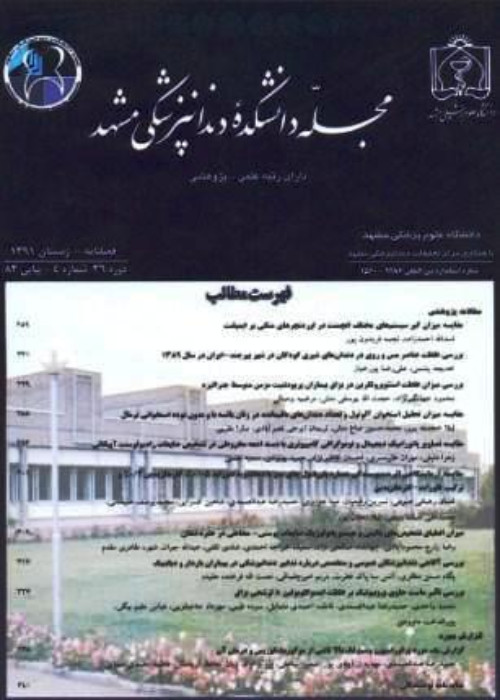Evaluation of Microleakage in Pulpotomized Primary Molars Restored with Core max II: An In Vitro Study
Author(s):
Abstract:
Introduction
Routine materials used for restoration and reconstruction of primary teeth are composite resins، glass ionomers، amalgam and stainless steel crowns. The purpose of this study was to determine the amount of microleakage in pulpotomized primary molars restored with core max II (one kind of adhesive restorative materials). Materials and Methods
Thirty extracted primary molars were selected. After being cleaned، the teeth were pulpotomized and then covered with Zinc Phosphate as liner. The MOD cavity outline was performed with buccolingual width of 2/3 of the distance between cusp tips، and the gingival floor finished at CEJ level. Then، the teeth were divided into two equal groups of 15. Teeth in group A were restored with amalgam، whereas the others in group B were restored with Core max II. Both groups were carried to artificial mouth staying for 2 days، followed by a one-week period resting in incubator. Apices of the teeth were sealed with wax and the entire tooth surface، except for the restored zone and 1 mm beyond it، were covered with two layers of varnish and then they were floated in a special liquid paint، called Basic Fuchsin 20%. Next، roots of the teeth were cut three mm below the CEJ. After that، the teeth were mounted in epoxy resin up to 1 mm below the CEJ level. After 24 hours، all of the specimens were sectioned mesiodistally. Finally the specimens were examined with a steriomicroscope in order to determine the amount of microleakage. Using the SPSS software version 11. 5 at 5% significance level، the results were analysed with Mann-Whitney U test. Results
Paint penetration intensity in restored teeth with no microleakage was equal in group A and B. There were minor differences between these two restorative materials when microleakage penetrated to either half of gingival wall or to all of gingival wall. Paint penetration intensity in group A was equal with that of group B when microleakage penetrated in axial wall. The difference in the amount of microleakage between amalgam and Core max II was not significant (P>0. 05). Conclusion
According to the results of this study، since the amount of microleakage in Core max II was as low as amalgam، it can be used as an suitable alternative restorative material in pulpotomized primary molars.Keywords:
Language:
Persian
Published:
Journal of Mashhad Dental School, Volume:36 Issue: 3, 2012
Pages:
231 to 238
magiran.com/p1042014
دانلود و مطالعه متن این مقاله با یکی از روشهای زیر امکان پذیر است:
اشتراک شخصی
با عضویت و پرداخت آنلاین حق اشتراک یکساله به مبلغ 1,390,000ريال میتوانید 70 عنوان مطلب دانلود کنید!
اشتراک سازمانی
به کتابخانه دانشگاه یا محل کار خود پیشنهاد کنید تا اشتراک سازمانی این پایگاه را برای دسترسی نامحدود همه کاربران به متن مطالب تهیه نمایند!
توجه!
- حق عضویت دریافتی صرف حمایت از نشریات عضو و نگهداری، تکمیل و توسعه مگیران میشود.
- پرداخت حق اشتراک و دانلود مقالات اجازه بازنشر آن در سایر رسانههای چاپی و دیجیتال را به کاربر نمیدهد.
In order to view content subscription is required
Personal subscription
Subscribe magiran.com for 70 € euros via PayPal and download 70 articles during a year.
Organization subscription
Please contact us to subscribe your university or library for unlimited access!


